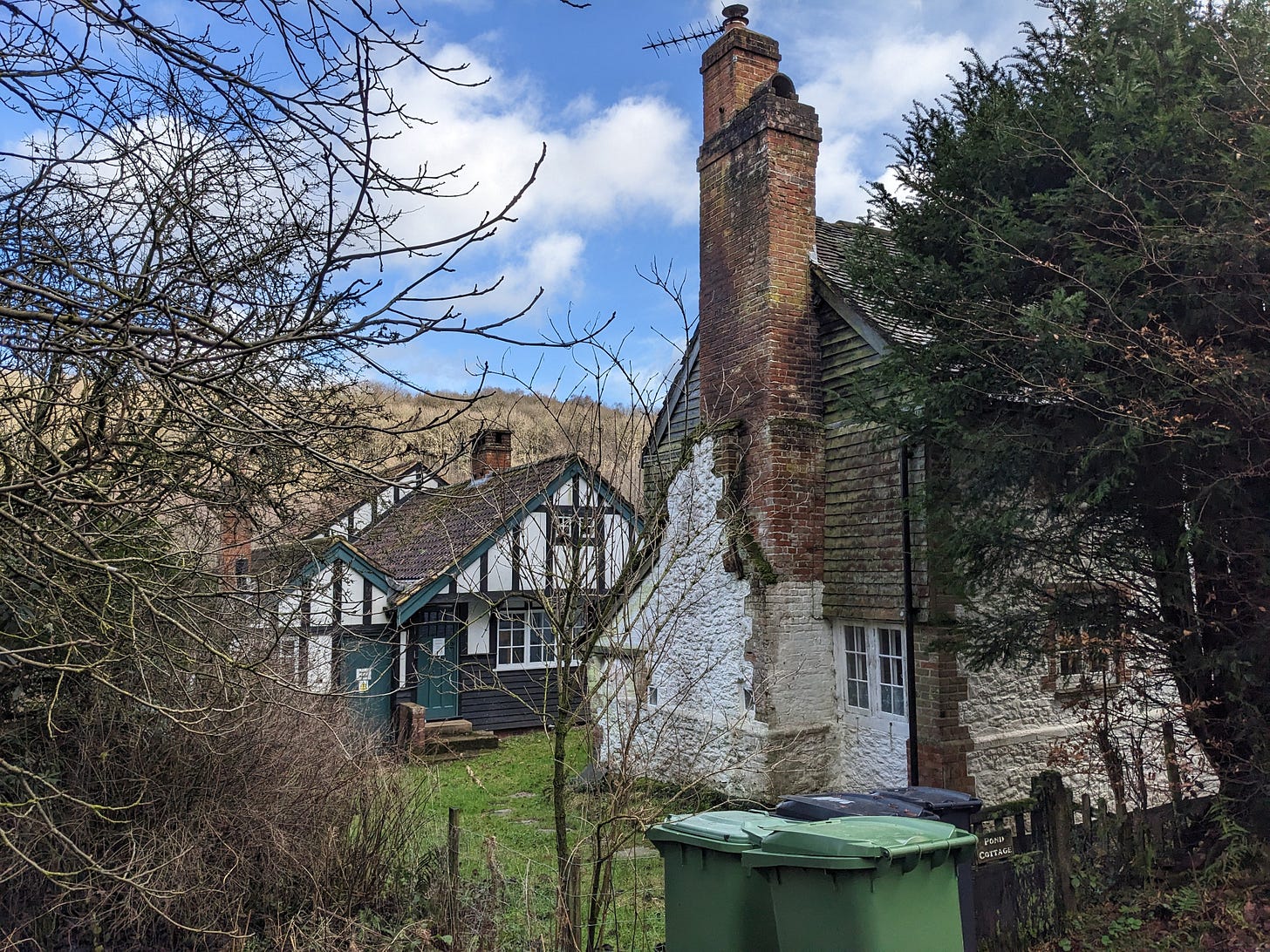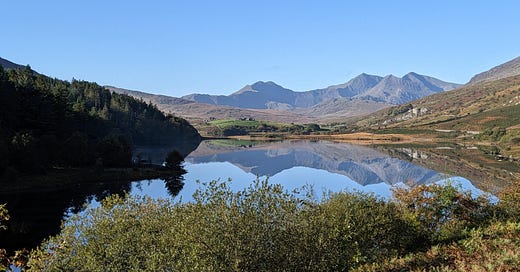Willing Hands and Eager Minds
On the origins of conservation volunteering, and the importance of education in the early days
This year marks the 75th anniversary of some of the UK’s most important legislation on nature protection and countryside access. The National Parks and Access to the Countryside Act 1949 led to the establishment of the first National Parks, Areas of Outstanding Natural Beauty (AONBs, now renamed National Landscapes) and National Nature Reserves in England and Wales. Getting official recognition for these places was a major achievement after long years of campaigning, but if these newly protected sites were to be more than lines on a map, they needed to be properly looked after, and in the aftermath of the Second World War, there was little money available for this.
At the same time, changes in farming were having a huge impact on parts of the countryside. Certain habitats, such as the chalk grasslands of the South Downs, are the result of centuries of grazing, and in many places this grazing had now largely ceased as sheep farming was abandoned and much of the wild rabbit population had been wiped out by myxomatosis. Without the animals who prevented hawthorn and other scrubland plants from establishing, there was a risk of losing species like Chalk Hill Blue butterflies and Spider Orchids that had evolved to take advantage of more open habitats, meaning some sites might no longer contain the species they had been established to protect.
By the end of the 1950s this situation was becoming desperate. There was also a growing anxiety that an increasingly urbanised society was losing its knowledge of, and interest in, wildlife. Organisations with an interest in nature conservation realised that something had to change and came together to form the Council for Nature whose aims were to support the establishment of nature reserves and to promote a better understanding of nature conservation. The Council’s membership included everyone from the British Museum to the Buxton Field Club and the Bristol Naturalist Society along with numerous other local natural history societies, learned societies, museums and universities with more joining all the time. By 1963, there were around 400 members in total.
During the 1960s, the Council ran two National Nature Weeks. The first of these in 1963 introduced the concept of nature trails to the UK, was commemorated with a special set of postage stamps, and even featured on the long-running Radio 4 soap opera The Archers which at that time had an audience of 3.5 million[i]. The second National Nature Week in 1966 placed more of an emphasis on urban nature and the wildlife people could experience close to where they lived.
But before they did any of that, the Council had come up with an initiative which would address both of their key aims. Organising parties of young people to help restore threatened habitats would not only provide opportunities to educate the next generation about natural history but would also address their desire to ensure that nature reserves were being properly looked after. Plans for The Conservation Corps as it was to be known were discussed and agreed at the Council’s very first meeting[ii], and it was established soon afterwards with a retired Army Officer appointed to run it.
The Corps’ first work party took place at Box Hill, in what was then the newly designated Surrey Hills AONB, on an unseasonably warm day in February 1959. The 42 volunteers who cleared dogwood scrub to encourage the growth of juniper and chalkland flowers that day included dozens of young people recruited from youth organisations and local natural history societies in London and Surrey. By chance, the Surrey Hills was also the place I chose for my first taste of conservation volunteering when I took part in a National Trust working holiday as a teenager in the 1980s.

Despite including both hard labour and the need to attend lectures, the Brigadier’s working holidays proved popular with around 400 applicants for the 160 places on the residential tasks organised in the Corps’ first few months of existence. From the start there was as much focus on passing on knowledge to young people, as there was on making use of their energy and enthusiasm. It was considered important that tasks “should have a viable ultimate scientific purpose and should not be such that it would obviously be more usefully and efficiently done by machinery.”[iii]
All the residential tasks included a lecture on natural history each evening with local experts invited to speak about the species and habitats in the area, and many included visits to other nearby sites of interest too. Participants also learnt how to undertake traditional rural activities such as hedge-laying, ditching, fencing, felling, coppicing, peat digging and scything. As well as making a significant contribution to the success of the working holidays, this educational element had long-term impacts too as many of those who volunteered went on to have careers in the conservation sector.
In the decades since, much has changed. In 1970, The Conservation Corps became an independent charity – the British Trust for Conservation Volunteering (BTCV, now known simply as TCV). There are now numerous other organisations offering conservation volunteering opportunities in the UK, most of which are no longer targeted specifically at young people, and the idea has spread to many other countries.
The emphasis on educating volunteers has changed too and there is no longer a formal programme of lectures as there was in the early days. Perhaps that doesn’t matter if volunteers are acquiring knowledge in less formal ways. I have certainly learnt a lot either through talking to those volunteering alongside me or through undertaking tasks such as coppicing and hedge-laying which have helped me appreciate the impacts humans have on other species. But I don’t know how representative my experience is, and I haven’t been able to find any research which would help me understand this.
Most of the reporting on the impacts of conservation volunteering focuses on the improvements to different types of habitats and the increased employment opportunities and health and well-being benefits for individuals (see for example, TCV’s annual report). These are all important issues, but it seems there is now far less interest in the role that volunteering can play in helping to increase people’s understanding of wildlife, which seems a shame given that this is something that was regarded as key to the initiative’s success in the early days, and the need for it is as important now as it was in the 1950s.
[i]https://www.researchgate.net/publication/232001191_Nature_Trails_The_Production_of_Instructive_Landscapes_in_Britain_1960-72
[ii] ‘The Council for Nature’, Nature, No. 4637, September 13, 1958, p.701
[iii] ‘Nature Conservation and Youth Service in Britain’ Nature 184, 685-686, (1959)
To finish….
…a few things I’d like to share:
David Bellamy: One of the people who took part in the very first conservation work task at Box Hill was a young botanist called David Bellamy who would go on to become well-known as the presenter of TV programmes about science and the environment. That day in February 1959, he was just out for a walk when he came across a group of people who he thought were vandalising the countryside. When he discovered what they were really doing, he joined in with his characteristic enthusiasm. David would go on to have a huge impact on nature conservation in this country and there’s a lovely tribute to him here written after he died in 2019.
TCV’s History: TCV, as The Conservation Corps is now known, celebrates its 65th anniversary this year, and there’s more details about its history and the various achievements over the years on its website. There’s also a section where you can share your own experiences of volunteering with TCV.
Puffin numbers increasing: When it can sometimes feel like all the environmental stories are very gloomy, it’s good to have something to celebrate for a change. The number of puffins on Farne Islands, off the North East Coast of England, has increased by 15% since 2019. Scientists haven’t been able to undertake their annual census there for the past few years because of the avian flu outbreak which killed thousands of birds on the islands, but now that they have been able to visit again they’ve discovered that the puffins have managed to thrive despite this, probably as a result of their preference for separate burrows.






Great piece. It was read out loud to the volunteers today 😀
Very interesting potted history of conservation volunteering in the UK! My first experience of conservation volunteering was, like yours, on a National Trust working holiday in the 1980s, I was helping build a footpath in the north of England at Styal Woods.